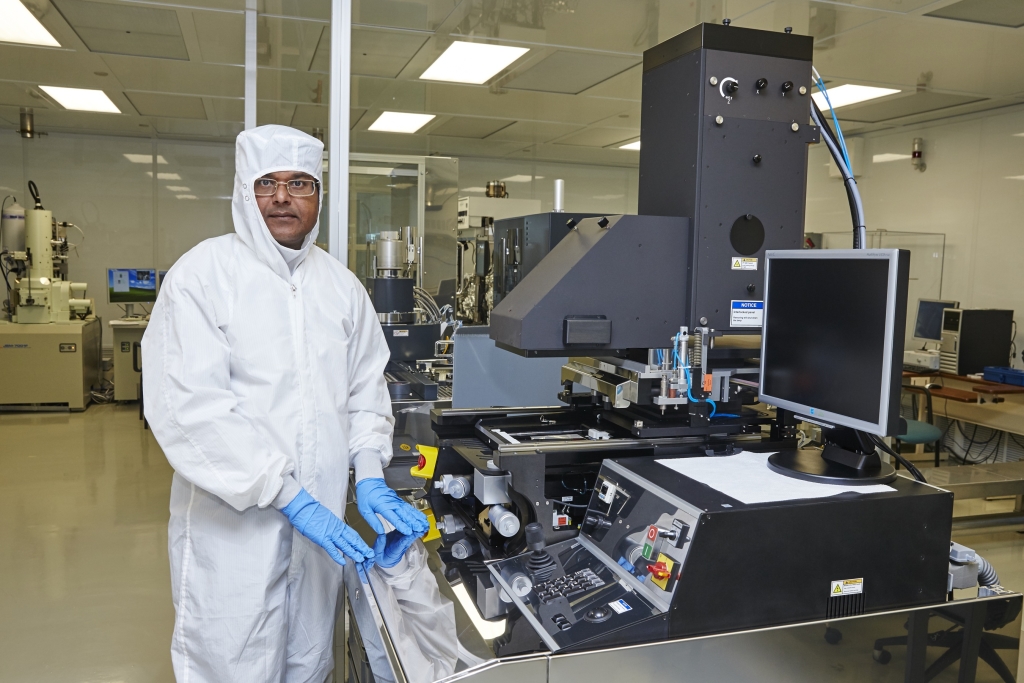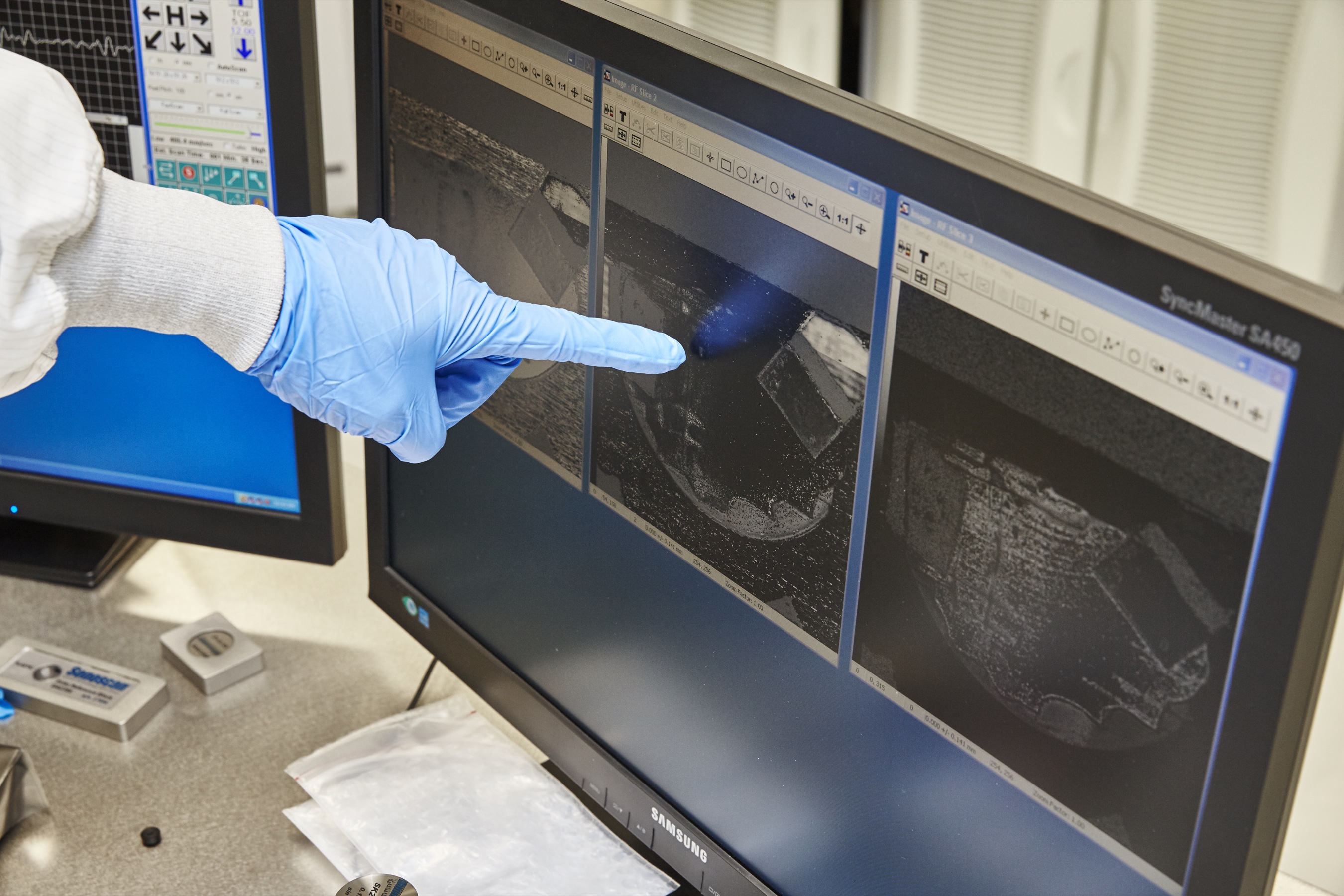With the help of the Southern Ontario Water Consortium’s (SOWC) state-of-the-art equipment, McMaster University’s water experts are changing the world of sensor technology.
The Hamilton University is a global leader in sensor technology and a majority of the development of new tools aimed at solving the water challenges facing industry and municipalities is happening at the university’s Micro and Nano-Systems Laboratory. Engineering professor Jamal Deen, who is the Canada Research Chair in Information Technology and has long track record in developing sensors for water quality monitoring, leads this $10.6 million facility. The facility is geared towards the development of miniaturized, low-cost and easy-to-use prototypes for imaging and sensing in health care and environmental applications.
“Companies come to us and identify problems in terms of their sensor needs and we then develop the technology to solve these problems,” says Gay Yuyitung, executive director of the McMaster Industry Liaison Office. “Through this partnership we can create something that we can take to the commercial arena where it eventually becomes a product that is widely used.”
The university’s researchers are utilizing this lab to develop sensor technology solutions to issues related to water treatment, water contamination and detection and diagnosis. SOWC’s contribution to this laboratory includes high-tech equipment for designing sensors. So far Deen and his team of researchers have developed chemical sensors that can detect a variety of water parameters including pH levels, free chlorine, oxygen, phosphate, bacteria as well as the presence of pharmaceutical products in the water. The focus of the sensor design research is on low-cost manufacturing, ease of use, reliability and sensitivity.
One specific project Deen, along with fellow McMaster engineering professors, Ravi Selvaganapathy, the Canada Research Chair in Biomicrofluidics, and Raja Ghosh, the Canada Research Chair in Bioseparations Engineering, is developing are pH and chlorine sensor systems in drinking water that communicate wirelessly and are focused on small communities in Canada and India. This work is part of an NSERC Strategic Network program geared toward First Nations and other remote communities that may not be connected to a municipal water treatment system as well as a Center of Excellence program between Canada and India for communities in India.
“Having a sensor like this removes the requirement for specific expertise so it can be used in regions where they may not have the experts on hand,” says Selvaganapathy. “We are trying to identify gaps in the current sensor technology.”
The research team is also striving to develop these sensors in a cost-effective manner using the equipment provided by SOWC. This includes a nano imprint lithography system, which can make nano-scale features on a mould that can then be used to make imprints. Having this system enables the researchers to mass produce sensors at a fraction of the cost. The capacity also includes biomolecule writing systems similar to an ink jet printer that can efficiently print the material used to construct sensors.
“The material is very expensive so these printers allow us to use minute amounts and to print in certain patterns so that the material is only placed where it is needed and nothing is wasted,” says Selvaganapathy. “Again, this helps us lower the cost of the sensors and if we can lower the cost, then more people will find use for them.”

Photo: Professor Matiar Howlader standing beside an Ultraviolet Nano-Imprint Lithography Tool in the McMaster/SOWC Sensors Laboratory which is capable of fabricating structures of tens of nano-millimeters in size over large areas for devices and components such as core elements of sensors and the critical elements of sample pre-processing modules.
Another research group working out of the lab is the MacWater Diagnostic Research Initiative, which is made up of 10 researchers from McMaster, eight from the University of Guelph and one from Environment Canada.
Led by biology professor, Herb Schellhorn, MacWater is working on creating sensors that have the ability to continuously monitor and provide information on water quality with little maintenance.
One of the main projects to grow out of this research is a project aimed at developing sensors that can detect bacteria in the water using biomarkers. Selvaganapathy is heading the engineering side of the project and Schellhorn is leading the biology side.
“The engineers are developing the technology behind the filtration system, the sampling process and the DNA extraction process and the biologists are developing the biomarkers required to identify pathogenic bacteria from non-pathogenic bacteria,” says Selvaganapathy.
As part of this project, the research group is working with the Regional Municipality of Niagara to develop a sensor system that will allow them to quickly and easily detect when their beaches have high levels of pathogenic bacteria, such as E. coli, in the water.
Right now the municipality monitors the water by manually taking a sample, sending it to a lab in Hamilton and waiting two to three days for the results. The research team is working on developing a sensor that can automatically take a sample, process it on-site using the biomarker technology and produce results within a couple of hours, says Selvaganapathy.
This technology would also be beneficial for monitoring water that is being drawn from the lakes, he adds.
Beyond the collaborations underway in Canada, McMaster also has partnerships across the globe including China. Last year the university set up a partnership with researchers and industry in China to develop sensors geared towards water treatment. Led by engineering professor Chang-quing Xu, the McMaster Jiangsu International Technology Development and Translation Centre involves seven McMaster researchers and five researchers from China and is focused on commercializing innovative water technologies.
One of the group’s current initiatives is the development of bacteria sensors for online water quality monitoring. The researchers are developing a microfluidic flow cytometer, which can be used to count the bacteria in water as it flows through the device. This technology could then be used to monitor drinking water as it flows out of the tanks used in Beijing, which are positioned on top of buildings and currently checked only periodically. The researchers are also trying to reduce the cost of producing this piece of equipment from $100,000 to $1,000 so that it can be widely used.
Another project this group hopes to achieve is the commercialization of real-time water monitoring technologies for wastewater treatment. This water quality monitoring sensor system would not only be able to detect abnormal levels for a variety of water quality parameters, but also learn from the information it gathers and develop its own response. Based on how the water changes from day to day, the system would essentially build its own program and adapt its responses to the needs of the environment.
“Each plant is unique and this system would cater its response so the plant can run as efficiently as possible and without the need for expertise,” says Selvaganapathy. “Right now we are only using sensors to sense information and send a response, but we want to use this technology so that it can learn to react. What we are trying to achieve can be used in almost any industry that uses water.”
In addition to the school’s engineering and biology expertise, McMaster also has a research group dedicated to social policy and water issues.
The McMaster Water Network is aimed at connecting water science, technology and policy to deliver local and global impacts on major societal challenges linked to water and water security. Led by political science professor and Philomathia Chair of Water Policy, Dustin Garrick, the network serves more than 50 researchers as well as students in over 35 classes.
“This group is just another example of how McMaster excels at having an effective interaction between engineering, biology and social policy” says Yuyitung. “This allows us to not only investigate and understand water issues, but also develop the tools needed to solve these issues.”


